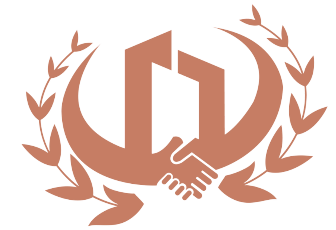The Evolving Landscape of Blue-Collar and White-Collar Work
The traditional boundaries between blue-collar and white-collar jobs are increasingly becoming blurred as technological advancements and societal shifts reshape the job market. Understanding these changes and preparing for future trends is crucial for both workers and employers. Here’s a closer look at the evolving dynamics and what lies ahead.
The Rise of the “New Collar” Worker
Emergence of New Collar Roles
A new category of workers, often referred to as “new collar” or “purple collar,” is emerging. These individuals bridge the gap between traditional blue-collar and white-collar roles by combining technical expertise with soft skills.
Examples:
- IT Technicians: Professionals who manage and troubleshoot technology systems, requiring both technical knowledge and customer service skills.
- Data Analysts: Specialists who analyze and interpret complex data sets, blending technical acumen with business insights.
- Skilled Tradespeople with Advanced Certifications: Workers with specialized training who perform complex tasks beyond traditional manual labor.
Automation and Job Displacement
Impact on Blue-Collar Jobs
Automation is transforming various industries by taking over routine and repetitive tasks. While this shift can displace traditional blue-collar jobs, it also creates new opportunities and requires adaptation.
- Routine Tasks: Jobs involving repetitive activities are increasingly being automated, affecting roles in manufacturing and other manual labor sectors.
- New Opportunities: Automation creates demand for roles in robotics maintenance, programming, and systems management, requiring new skill sets.
Impact on White-Collar Jobs
White-collar jobs are also impacted by automation, particularly those involving data entry, administrative tasks, and customer service.
- Administrative Tasks: Automation tools are handling tasks such as scheduling, data management, and basic customer interactions.
- New Roles: There’s a growing need for professionals who can develop and manage automated systems, analyze data, and implement technology-driven solutions.
Upskilling and Reskilling
Lifelong Learning
To stay relevant in the evolving job market, both blue-collar and white-collar workers must engage in continuous learning.
- Embracing Change: Workers need to adapt to new technologies and industry trends by acquiring new knowledge and skills.
- Skill Development Programs: Organizations should invest in training programs to help employees build competencies that match current and future demands.
Strategies for Success
- Training Initiatives: Offer regular workshops, online courses, and certifications to keep skills up-to-date.
- Career Pathways: Develop clear career progression plans that include opportunities for skill enhancement and role diversification.
The Future of Work
Increased Flexibility
The future workplace will likely feature greater flexibility in work arrangements, including remote work, flexible hours, and gig economy jobs.
- Remote Work: The ability to work from various locations will become more common, supported by digital communication tools.
- Gig Economy: Short-term contracts and freelance roles will offer greater flexibility for both employers and workers.
Collaboration and Teamwork
Effective collaboration across different teams and functions will be crucial in the future of work.
- Team Dynamics: Success will depend on the ability to work collaboratively across diverse teams and geographic locations.
- Cross-Functional Skills: Workers will need to be adept at working with colleagues from various disciplines and departments.
Technological Proficiency
Proficiency in digital tools and technologies will be essential for many roles.
- Digital Literacy: Workers must be comfortable using technology and adapting to new digital tools.
- Tech Integration: Companies will seek employees who can integrate technology seamlessly into their workflows.
Soft Skills
In addition to technical abilities, soft skills such as interpersonal communication, creativity, problem-solving, and critical thinking will be highly valued.
- Interpersonal Skills: Effective communication and collaboration will be key to success in both blue-collar and white-collar roles.
- Creativity and Problem-Solving: The ability to think creatively and solve complex problems will be essential in navigating the future work environment.
Conclusion
The traditional distinctions between blue-collar and white-collar work are becoming increasingly blurred as technology advances and job roles evolve. The rise of new collar workers, the impact of automation, and the need for continuous upskilling are reshaping the workforce. Both organizations and individuals must adapt to these changes by embracing lifelong learning, fostering flexibility, and developing a blend of technical and soft skills. By staying informed and prepared, workers and businesses can thrive in the future of work.

